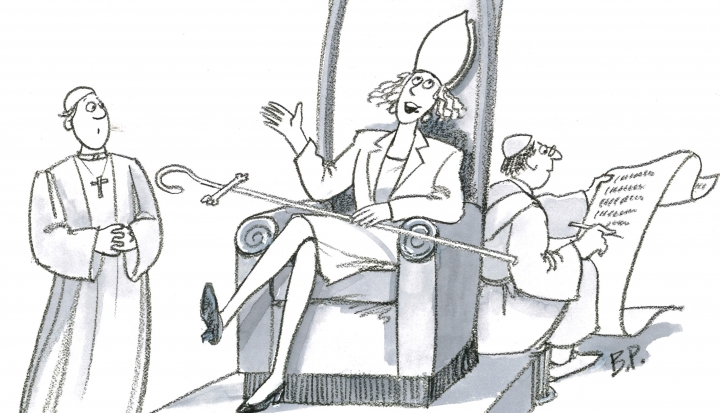A big thanks to Phyllis Zagano and our friends at the National Catholic Reporter for pointing out two significant omissions in America magazine’s translation of last week’s groundbreaking Pope Francis interview. And thanks to Father Matt Malone and his crew at America for apologizing and quickly correcting one of those two mistakes.
Here are the pope’s words that, due to a “production error,” were left on America magazine’s cutting room floor: “It is necessary to broaden the opportunities for a stronger presence of women in the church.” The second omission, for some reason not yet corrected in America’s web version of the interview, came in the Italian editor’s introduction to that section, which read: "In an interview he had affirmed that the feminine presence in the church has not fully emerged, because the temptation of machismo has not left space to make visible the role women are entitled to within the community."
Given the significance of these two omissions and the importance of the topic, it is understandable that some feminist Catholics are a bit skeptical and, along with former U.S. Catholic managing editor Heidi Schlumpf, “wonder how accidental this omission was. I mean, it was about women's roles in the church, one of the touchiest topics in Catholicism today.” But I agree with Heidi that we should give the editors of America magazine the benefit of the doubt and that the “mudslinging” this episode has caused from some, is yet another unfortunate incident of a lack of Christian charity in our intra-church debates.
In the section of the interview on women, the pope also says, “The feminine genius is needed wherever we make important decisions. The challenge today is this: to think about the specific place of women also in those places where the authority of the church is exercised for various areas of the church.”
These words have raised expectations that Pope Francis may soon appoint women to key decision-making roles in the Vatican. The prominent Spanish newspaper El País even claims to know of the pope’s “plans to appoint a female cardinal.” Its source for those “plans,” unfortunately are a little vague: “It’s something that Pope Francis has thought about before: naming a woman cardinal.” And we know this how, one has to ask.
Although there have been lay cardinals in the church's past, today canon law states that cardinals have to be ordained. But, the newspaper’s Brazil correspondent, Juan Arias, argues, “cardinals don’t have to be priests, they can be deacons.” Canon 350 of the church’s code of canon law specifically lists the possibility of “cardinal deacons.”
And so Arias lays out a papal two-step. The opening of the diaconate to women, he asserts, “is one of the reforms that Francis has in mind,” although again he gives no indication of how he is reading the pope’s mind here. But he quotes the work of Phyllis Zagano, who laid out the case for women deacons in a 2012 interview with U.S. Catholic.
And once that’s done, comes Step 2: “Any woman who is appointed deaconess can indeed become a cardinal without having to change canonical law,” writes Arias.
“Knowing this pope,” an unnamed Jesuit priest told Arias, “he wouldn’t hesitate before appointing a woman cardinal. And he would indeed enjoy being the first pope to allow women to participate in the selection of a new pontiff.”
Which would finally realize an idea that U.S. Catholic magazine floated 21 years ago. In a July 1992 article titled “Women shouldn’t be an exception to the cardinal rule,” Chicago Catholic publisher Greg Pierce made a convincing case for women cardinals.
While this whole scenario at this point appears to be mostly speculation, it remains a very intriguing possibility that, given Pope Francis’ many surprises so far, one would be foolish to rule out.
Image: William Petersen









